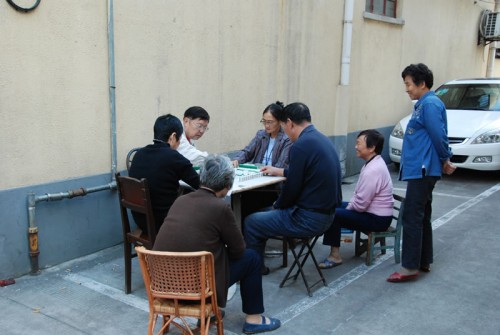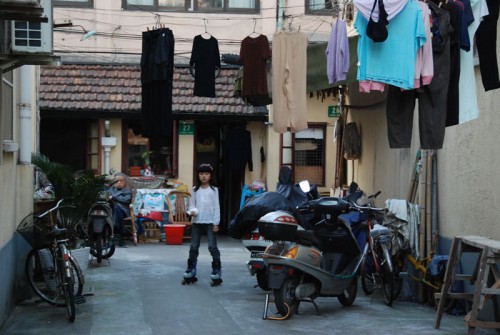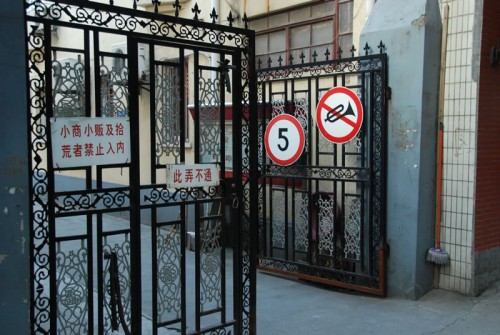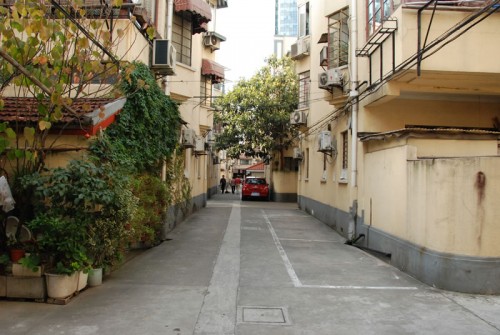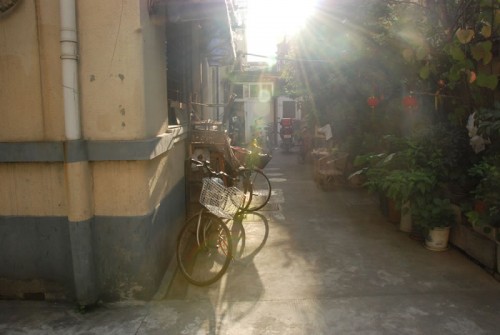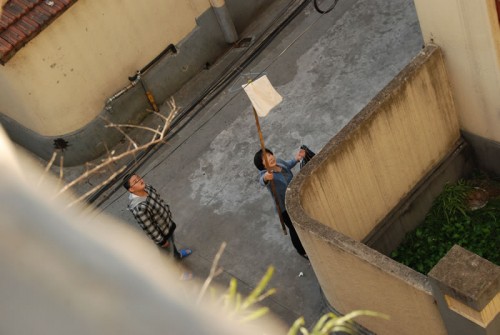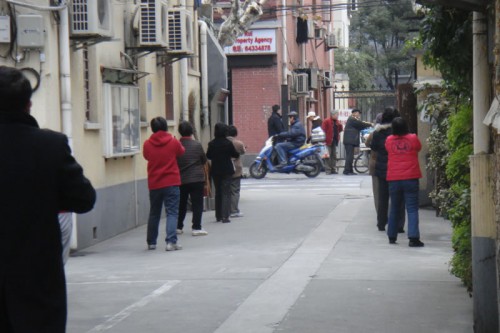I had just seen Gary Hustwit’s Urbanized, and I must say one of the quotes from the documentary hit the nail on the head about Singapore’s social condition. I’ve always felt there was a problem with the communal landscape in Singapore - the problem that there was none. But I accepted it as being part of an ‘advanced’ and ‘modern’ society, that we were modern citizens of a city, and not some village or town in some rural area. I grew up in Toa Payoh in Singapore, the first and oldest area to have HDB flats built. HDB flats, as they are known in Singapore, are government-built residential blocks varying from 20-10 stories high which provide an affordable and comfortable housing solution to most residents in Singapore. They are an architectural model based on Bauhaus concepts, using modular blocks stacked on top of each other like Lego. Yes, they were based on famous Bauhaus ideals of design that followed function and social responsibility. But yet, as we know, design that arises from rational motivations will only have rational results, and tends to be a little cold.
No I’m not criticizing the government housing in Singapore, but yet I am. I have first-hand experience of what it feels like, growing up 21 years in a HDB neighbourhood. Yes, it is a great solution. Being a small island, it solves the problem of space, becoming a vertical street that floats in the air, and being modular, it can be cheaply fabricated and duplicated, again and again, and again and again. This provides affordable housing for everyone, a privilege that Singaporeans do not understand how lucky they are to have. If they ever traveled elsewhere, such as China or even the States, they will realize it isn’t as convenient elsewhere. So I’m grateful for what it is and its purposes. But here I have to stop my praises and be critical for what it is, for I am a child of my land, and one can’t help but point out the consequences of such a model.
The quote in Urbanized showed a building in New York, probably built during the time of Robert Moses, not unlike the HDB flats in Singapore, and remarked that such buildings destroyed the framework of a community, because it prohibited interaction between the neighbours. In traditional times when we still had villages or towns, when everything was more or less flat, people could see what was outside their house, and would sit outside too. There were open spaces where children could play, and people are rather visual; they associate with what they see, and over time, they recognize neighbours, they start chatting and everyone becomes a community. Such is lost in the modern high-rise. Nowadays, residential blocks are cold and inhumane, filled with dark corners that people are afraid to go to. Few talk to each other, because the balconies are so narrow, and for some reason, people feel like trouble is looking for you when strangers knock on your door. There is no more public space near the living areas save for the playgrounds downstairs. And even so, space is wasted because the journey along the balconies and vertically through the lifts have become purely functional for getting from point A to point B, whereas back in the day, the journey home is also the journey to greet and interact with the community. The points of interaction in HDB heartlands in Singapore now are only in shopping malls, churches, playgrounds (which are usually deserted now), coffee shops (known as kopitiams) and schools. Other than these touchpoints, the residential areas are basically stark and provide only a singular function: for you to rest at home with your family. Hence I have grown up without knowing most of my neighbours, although luckily for me, we were at the unit beside the elevator, and people always had to walk past our door to get there, so they would sometimes say hello. I knew most of the shopkeepers downstairs my block, and even after 7 years of absence, they would still give me a smile or a nod when they see my face on my visits back home. That was the little warmth I could get out of communal living, but it’s even colder now as most HDB flats don’t have shops at the base but only cold empty void decks. This is why you have an international community in Singapore, with multi-cultures and multi-races living in the same block and on the same street, but yet no sense of community in the residential areas, and hence no sense of belonging. You do, however, feel a sense of belonging to organizations and institutions such as schools and workplaces.
I have been in and out of Shanghai, but in the past year I have moved into an old lane house in the French Concession. The old lane houses in Shanghai are called ‘Nongtang’ (弄堂), which are really small lanes that extend from the main road into an area of low-storied houses. These clusters of houses are grouped by a unit number, such as 12′Nong’, and they have a gate and a security guard assigned to each Nong. Inside each Nong there is a a common rubbish area, in some Nongs there are common bath houses and common washrooms. The area inside each Nong is lively, because they understand that the people who live within the gates are all neighbours, and so they put out their stuff freely, hanging clothes and plants. They also tend to take out their chairs in Summer, the old people mostly, sit around and chat or play mahjong in the sun or at night, or letting their dogs play with each other. Even though I have only lived here for a year, I already start to recognize most of their faces since I get to see them more than I did back in my HDB flat in Toa Payoh, and for them mine. There is a sense of looking out for each other within each Nong, as some thieves tried to steal my bike before, and my neighbour’s dog barked and another neighbour also caught someone suspicious in the area and saved my bike. Once, an old lady’s son came to knock on her door but no one answered even though he could hear the TV from outside, and he was worried that the worst might have happened, and so started banging away at the door for her to open up. It was late at night and it stirred the entire Nong, who all came out to find out what’s happening and if they could help, which they did. My neighbour downstairs, who is an old ayi, took a long bamboo stick and started knocking on that lady’s window. Fortunately the old lady woke up and opened the door, and everyone had a sense of relief. I would never have had such an experience in Singapore. Nothing so human.
What does all this mean and what am I saying? I just feel that if Singapore wants to create a communal society, where people look out for each other and are not just selfish and think about themselves, and where people feel like they belong to where they live, then something ought to be changed. The interaction between residents needs to be facilitated through urban planning and design, even in the details at the very bottom level, like the mailboxes. Could we humanize them? Instead of just numbers, could we have a blank where people could write their family names or welcome messages or even draw pictures? There is a stark contrast between living in Singapore and anywhere else, and it is the lack of humanity. Do we really need void decks? At the end of the day, they become spaces for people to park their bikes or for kids to play soccer, which aren’t that bad, but weren’t the point of them to begin with. Their ‘repurpose’ came from the people living there themselves, finding use in a space that was left wasted. Quite often now, soccer is even banned from those void decks in fear of hurting someone. Everything in Singapore is duly organized, sectioned off piece by piece, in their places where ‘they should be’. If you want to do sports, take it to the stadium or the community centre. If you want to buy something, go to the centralized malls. Life is separated into compartments, with gaps in between; gaps that are wasted and lifeless, but worst of all, gaps that make residential life disconnected. Why can’t we have a cafe in the void decks? Or a late night movie screening where everyone is invited? Why can’t the walkways between school and HDB flats be filled with small little stalls or shops or games? It’s almost more interesting if you are forced to walk through something to get to another place, because it forces interaction and people are aware of their surroundings. What if you had to walk through a flea market or a bunch of people pracitising taichi everytime you want to get home? Wouldn’t that be more interesting?
In my place in Shanghai, because these old houses used to be a single unit, but were split up into 3 units after the war, I have to walk through my neighbour’s kitchen everytime I want to get home ( I live on the third floor). At first I thought it was annoying, but then I realized how interesting it is as I had to walk through their home everytime, and I would greet the old ayi and her family and her dog everytime I came home. And they would greet me back too.
I never got this in Singapore. And I had lived in the same place for 21 years.
